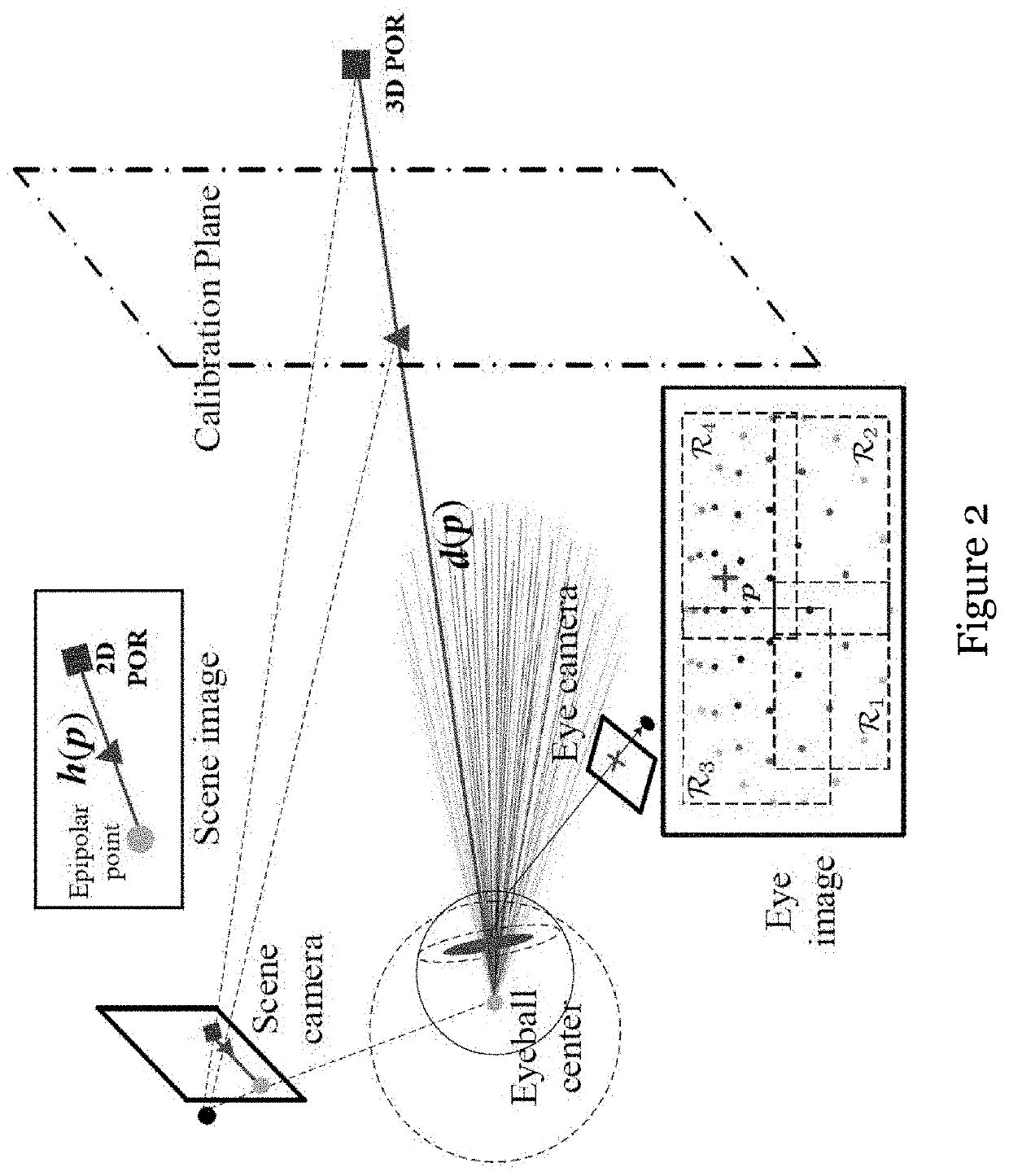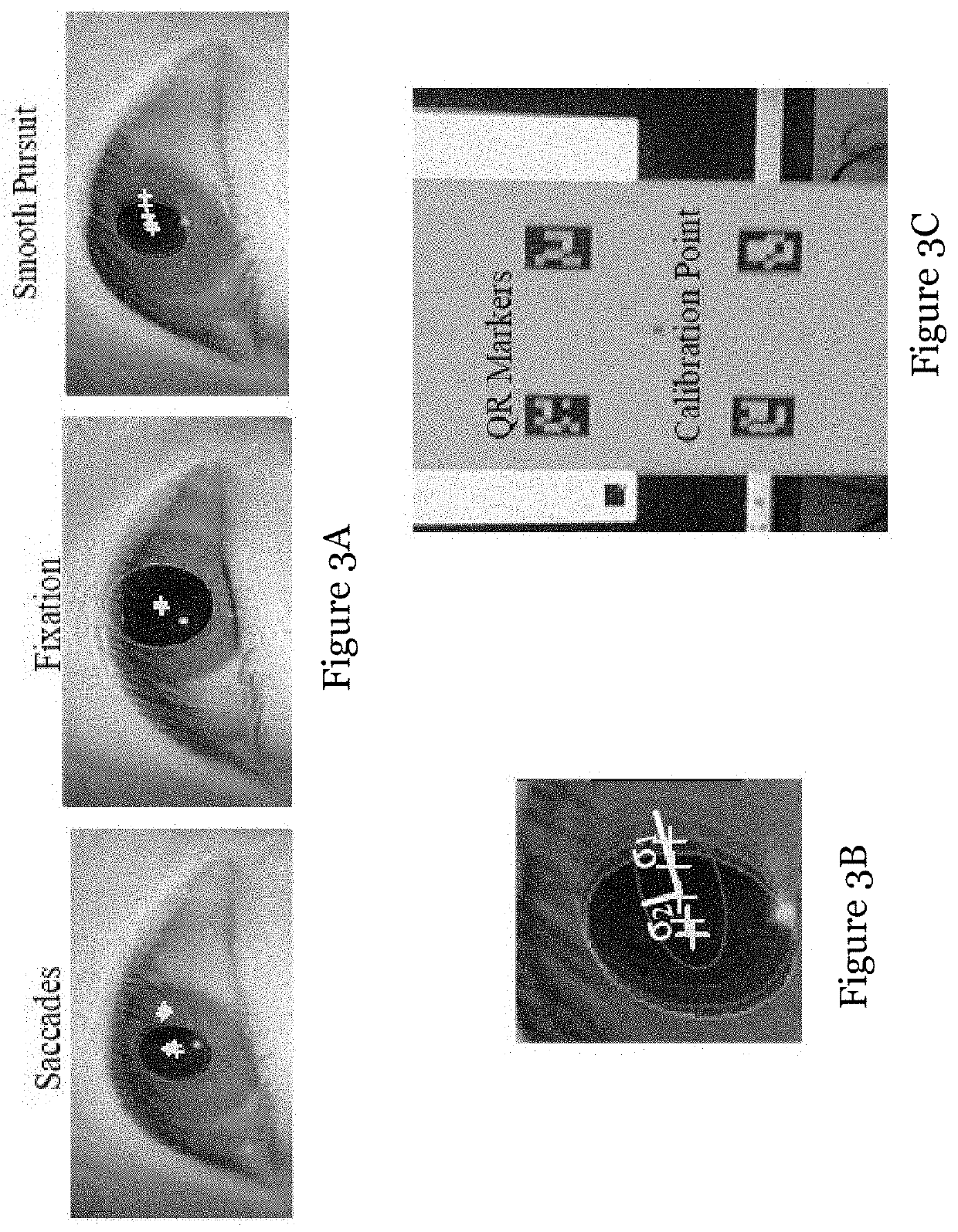System and method for gaze estimation
a technology of system and method, applied in the field of system and method for gaze estimation, can solve the problems of complex hardware configuration, parallax errors of 2d por estimation, and inability to detect interpolation/extrapolation errors, etc., and achieve the effect of improving calibration precision
- Summary
- Abstract
- Description
- Claims
- Application Information
AI Technical Summary
Benefits of technology
Problems solved by technology
Method used
Image
Examples
Embodiment Construction
[0064]The present invention provides a novel region-wise learning model for 2D and 3D POR estimation with mobile gaze trackers, and system and methods for implementing such model. The learning model is motivated from the idea that the input space of pupil centers can be clustered into a set of sub-regions such that simple local models are sufficient to fit the training data in each sub-region.
[0065]Referring to FIG. 1, for each local model, an epipolar line and a visual axis are predicted given a pupil center, thus 2D and 3D PORs can be calculated as the intersection point of two epipolar lines and visual axis, respectively.
[0066]In the region-wise learning model in one embodiment of the invention, a local homography-like relation is initially learned for fitting one-depth gaze data. This allows the fast computation of the Leave-One-Out (LOO) errors. Then, the partitioning structure can be determined in a cross-validated manner. The parallax errors observed at another (second) calib...
PUM
 Login to View More
Login to View More Abstract
Description
Claims
Application Information
 Login to View More
Login to View More - R&D
- Intellectual Property
- Life Sciences
- Materials
- Tech Scout
- Unparalleled Data Quality
- Higher Quality Content
- 60% Fewer Hallucinations
Browse by: Latest US Patents, China's latest patents, Technical Efficacy Thesaurus, Application Domain, Technology Topic, Popular Technical Reports.
© 2025 PatSnap. All rights reserved.Legal|Privacy policy|Modern Slavery Act Transparency Statement|Sitemap|About US| Contact US: help@patsnap.com



